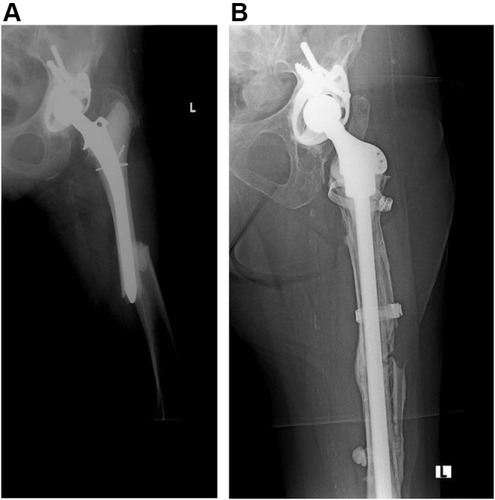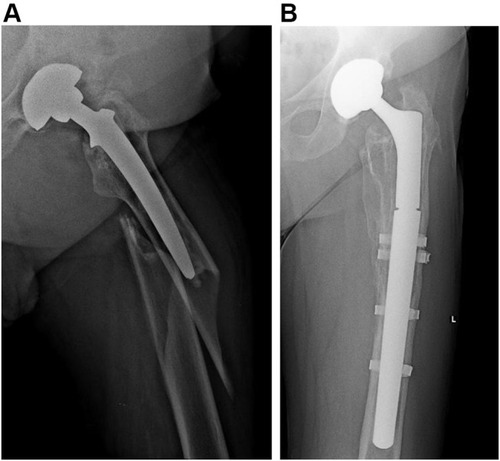Figures & data
Table 1 Demographics of Patients
Table 2 Clinical Results of Patients
Figure 2 Preoperative anteroposterior radiograph of a Vancouver type B1 periprosthetic femoral fracture in a 77-year-old female (A) treated with a long cemented femoral stem (B). At 5 years of follow-up, the fracture was healed and the stem did not show any sign of aseptic loosening.

Figure 3 Preoperative anteroposterior radiograph of a Vancouver type-B2 periprosthetic femoral fracture in a 61-year-old man (A) treated with an uncemented femoral revision (B). Fracture was healed and uncemented modular tapered fluted revision stem was well osteointegrated after 1 year of surgery.

Table 3 Early and Late Complications

